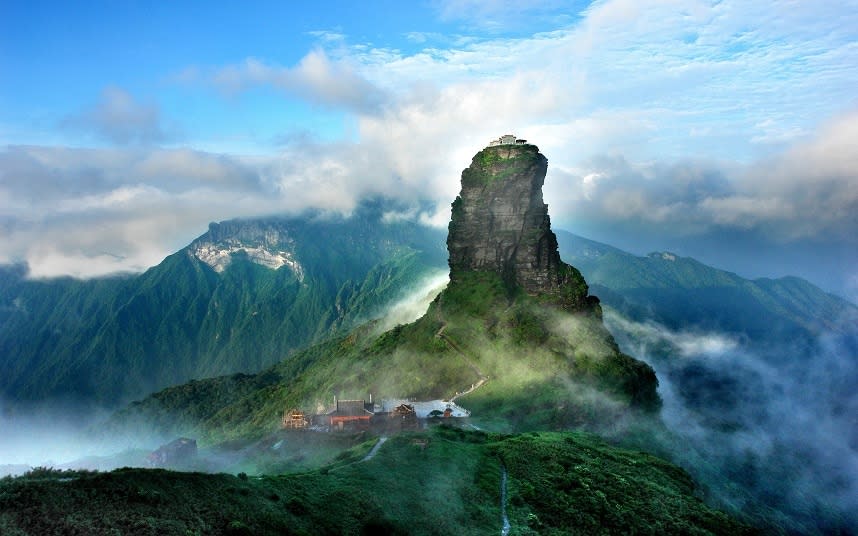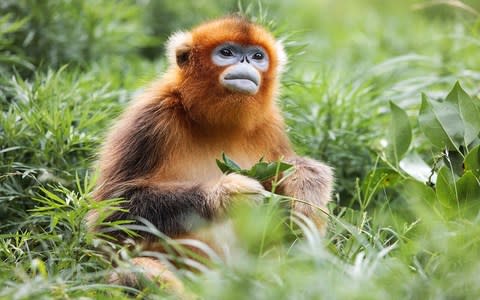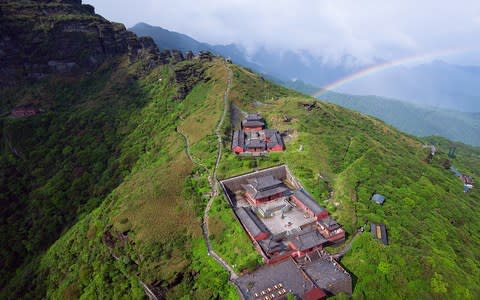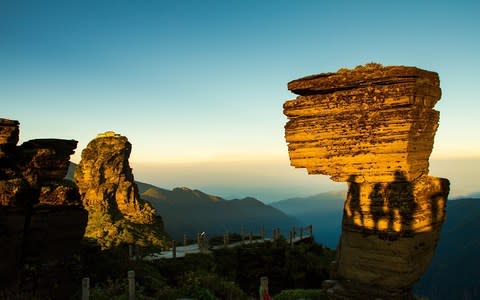Why you should visit Fanjingshan, China's extraordinary holy mountain

Fanjingshan, an other-worldly peak in China’s Wuling Mountain Range, is one of the newest natural wonders to have been added to Unesco’s ever-expanding list of World Heritage Sites.
The announcement was made last week at the 42nd session of the World Heritage Committee in Bahrain. Fanjingshan’s addition to the prestigious list means that China now has 13 natural heritage sites (and 53 overall) - more than anywhere else in the world. Australia and the USA both have 12, while the UK has 4.
Unesco recognises sites that are considered to have “outstanding universal value” and represent the most remarkable places on Earth. The list includes other famous attractions such as the Giant’s Causeway in Northern Ireland, Mount Kilimanjaro and the Great Barrier Reef.
Speaking of the new status, Song Xiaolu, head of the Chinese Guizhou delegation to the World Heritage committee, said: “We will continue to make an effort to protect and manage the natural heritage site of Mount Fanjingshan, and improve its basic infrastructure.”
The finger-like peak is described by Unesco as an “island of metamorphic rock in a sea of karst,” believed to have been formed during the Tertiary period somewhere between 2 million and 65 million years ago.
Here’s a lowdown of the peculiar Chinese mountain that is shrouded in spiritual heritage, ecological intrigue and - more often than not - a dense layer of fog.
At a glance | The criteria for natural Unesco World Heritage Sites
Why visit Fanjingshan?
First and foremost, for its ecological splendour. The isolated Wuling Mountain Range is known as “the gene database of China” due to its rich biodiversity. The region has 2,000 types of plant, 31 of which are endangered, and 19 threatened animal species roam these forests.

One of those endangered animals is the endemic grey snub-nosed monkey. Scientists know very little about these Old World monkeys, although it is thought that only 750 survive today - a number that has decreased in recent years due to habitat loss.
Other rare species that can be found on Fanjingshan and the surrounding mountains include the Chinese giant salamander, forest musk deer and Reeve’s pheasant. The hope is that the Unesco World Heritage status will help to preserve these species.

Fanjingshan, which in Chinese means “Buddhist tranquility”, has also been a sacred site for Buddhists since the Tang Dynasty. During the Ming Dynasty (1368-1644), 48 Buddhist temples were built on the mountain, many of which have since been destroyed. The ones that remain are significant pilgrimage sites for Buddhist worshippers around the world.
For everyone else, one of the main appeals of visiting Fanjingshan is the superlative views from the summit. Or rather, summits - there are three up here.
The highest of the three is the Golden Summit on Mount Fenghuang at 2,572 metres above sea level. At an elevation of 2,493 metres, the Old Golden Summit has a temple dedicated to Buddha Dipamkara. At the New Golden Summit, or Red Clouds Golden Summit (2,336 metres), there is a tricky vertical ascent of 100 metres to the top, where there are two peaks - each one topped by a Buddhist temple and connected by a bridge.

Perhaps the most photographed of all of Fanjing's attractions, the Mushroom Stone stands ten metres high and is magnificently lit up at night. There are many other strange rock formations and stone pillars on Fanjingshan.
How to visit
Anyone travelling from the UK has quite a trip on their hands. To get to Fanjingshan it’s an 11-hour flight from Heathrow to Guangzhou - northwest of Hong Kong - and then another 95-minute flight to Tongren Airport.

From Tongren, it’s a two-hour bus drive, and then a challenging 8,888-step ascent (around five hours) from the foot to the summit. Or, if that doesn’t tickle your fancy, there is a cable car that shepherds visitors to the top. For full information on how to get to Fanjingshan, see the official website.
20 incredible new UNESCO World Heritage Sites for 2018
Entry to the mountain costs 110 yuan for adults (£12.50). The 3,400-metre cable car ride costs 90 yuan (£10.20) for a return journey, which takes half an hour each way. Whatever season you visit, the advice is to pack plenty of warm clothes and waterproofs.

